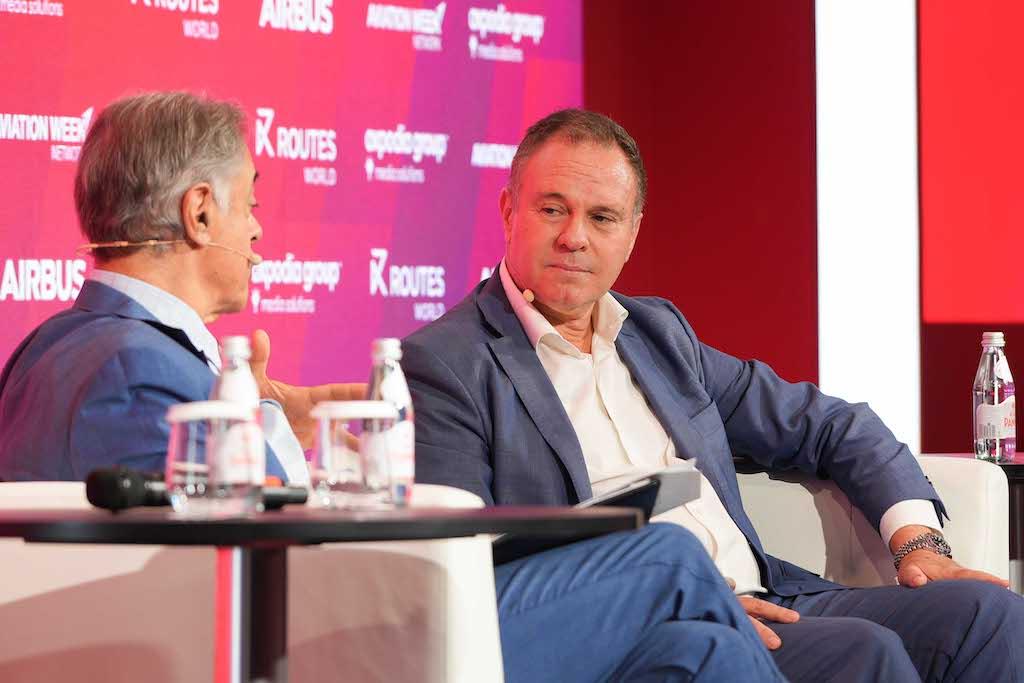
Oman Air CEO Con Korfiatis speaking at Routes World 2024.
Oman Air has revealed plans to launch its first new route in five years, marking the start of a strategy to maximize the utilization of its narrowbody fleet, according to CEO Con Korfiatis.
Speaking at Routes World 2024 in Bahrain, Korfiatis outlined the airline’s vision to become economically self-sufficient by 2027 as it seeks to achieve financial stability and strengthen its role in Oman’s tourism and connectivity growth strategy.
Korfiatis acknowledged the airline's challenges, noting that its financial performance has been unsustainable in recent years. "It's a 30-plus-year-old airline which hasn’t transformed," Korfiatis explained. "We need to justify our existence, to earn the right to continue being the flag carrier."
The restructuring involves significant reductions in network size and fleet simplification. Earlier this year, Oman Air reduced its network capacity by 30%, cutting unprofitable routes that could not justify continued operation.
“The amount of money we were losing on routes was just too high," Korfiatis said. However, the strategy isn’t to become a smaller airline. “The end game is to shrink, fix the foundations, and then go back to a growth agenda,” he added.
As part of this strategy, Korfiatis announced a new route to Rome, marking its first new destination in five years. The route will launch Dec. 20, with four flights per week, adding to the airline’s existing service to Milan. “We see good outbound opportunities for Oman, as well as inbound traffic from Italy, particularly during our peak season,” Korfiatis said.
Fleet optimization is another critical component of the restructuring. By early next year, Oman Air will operate exclusively with Boeing 787-9 aircraft for widebody services, and by mid-2026, it will transition to a 737-8 fleet for narrowbody operations.
Oman Air’s focus is on rebalancing its role as both a point-to-point carrier supporting Oman's Vision 2040 tourism goals and as a regional transit hub. Korfiatis said that the airline's historical reliance on transit traffic is expected to shift towards a 50/50 balance between connecting and destination traffic, aligned with the country's broader tourism strategy.
“We’re running a marathon, not a sprint," Korfiatis said of the restructuring process. “There are significant milestones along the path, and the work has already begun.”





